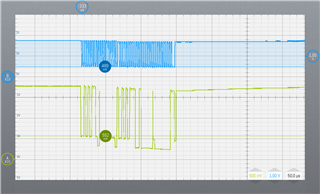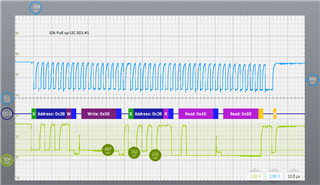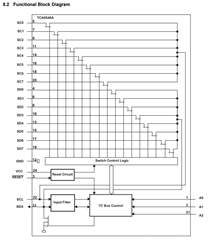Other Parts Discussed in Thread: TCA9517
Hy,
in an application I connect a controller with 5V logic to 14xLDC2112 with 1.8V logic using a TCA9548A I2C switch. In addition there is one 5V eeprom on the remaining I2C channel of the switch. All I2C pull ups are 1k8.
Now I observe a very high 0 level output (550mv) from the TCA9548A:

Even when changing pull ups to 10k, 0 level is too high, also positive edges degenerate

TCA9548A is powered by the 1.8V supply.
System works fine under regular conditions but is very susceptible to interference, i.e. by EMC
- What could be the root cause of the high 0 level?
- Any idea on how to get rid of the problem?
Any help appreciated,
Harald


